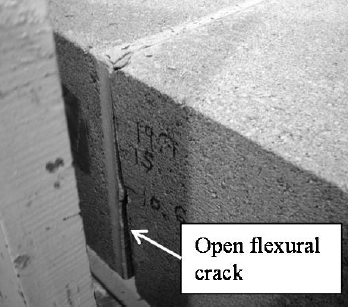1 MSc Student, Department of Civil and Geological Engineering, University of Saskatchewan, Saskatoon, SK, S7N 5A9, Canada, denise.sanchez@usask.ca
2 Associate Professor, Department of Civil and Geological Engineering, University of Saskatchewan, Saskatoon, SK, S7N 5A9, Canada, lisa.feldman@usask.ca
ABSTRACT
The mean lap splice resistance of No. 15 reinforcing bars with varying transverse spacing and lap splice length was evaluated in full-scale concrete block wall splice specimens. The range of the transverse spacing between bars was limited to that which allowed the bars to remain within the same cell, and included the evaluation of tied spliced bars in contact. A total of twenty-seven two-and-a-half blocks wide by thirteen course tall specimens reinforced with two lap splices were tested in four-point loading. A ll specimens were constructed in running bond with all cells fully grouted. The calculated mean tensile resistance of the reinforcement increased with increasing lap splice length, and was greater when the bars were in contact. Securing the bars in contact may have influenced the tensile capacity of the contact lap splices: higher stresses are likely to develop as a result of the bar ribs riding over each other with increasing slip. Results of the data analysis suggest that the tensile resistance of non-contact lap splices within the same cell is generally independent of the spacing between the bars; however, the slight decrease in the tensile resistance observed in select specimens with increased clear transverse spacing between the bars also suggests that the reduction in the cover distance to the block web influences bond capacity.
KEYWORDS: concrete block masonry, wall splice specimen, splice length, contact lap splice, non-contact lap splice
119.pdf



